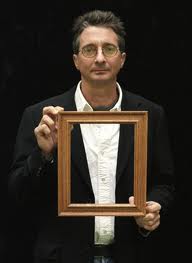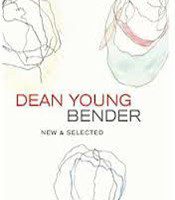I would be in trouble if I had to choose a favorite Dean Young poem. I remember when I stood in a bookstore reading Elegy on Toy Piano, before I knew or cared anything about contemporary poetry, and I remember hating it. I remember being angry when I read the first poem, “Thrown as if Fierce and Wild,” because I didn’t understand it. But I kept reading. I read the entire book, despite disgust and frustration. And then I bought the book. I had a similar reaction to his next book Embryoyo, but by then, I understood how to appreciate what Young was after. I plowed through his surrealism, learning as I went how to fall in love with the language, the joke that knows it isn’t funny, the poetry that cloaks itself in poetry. Dean Young was my gateway drug, addicting me to hard and interesting poetry, introducing me to the dragon I have wasted years chasing. I owe him a thank-you note.
Bender, Young’s latest collection of new and selected poetry, comes a year after his book Fall Higher, a brilliant collection. In it, Young deals with his immediate mortality as his terminal heart condition loomed large in his life and work. I am not one who wants to know the personal life of his poets, but in the case for Fall Higher, the context helps understand the book. As the poems represent the fragmented, distracted, staggered mind of the writer, just as Young’s poems always have, it also allowed for great tenderness. Young’s work has always been advanced, but in Fall Higher, he reaches his full poetic maturation. “Scarecrow on Fire” shows this best. The poem stands as a gorgeous meditation on mortality in a concrete, not abstract, way, but the final lines say everything so simply:
Maybe poems are made of breath, the way water,
cajoled to boil, says, This is my soul, freed.
In Bender, we readers get to see all of it, the first poems we read but didn’t appreciate, the poem that changed our mind about Young, and the poem made us read it three times before we began to understand. Even for readers unfamiliar with Young, this book is worth reading. Young’s aesthetic is unique, but it changes, softening and bending, over time.
What strikes me as most interesting in this collection, since a good number of the poems are familiar to me, is how these are grouped. Instead of compiling the poems chronologically, showing the reader the main idea of each book, the poems in Bender are alphabetized. The idea of alphabetizing poems is a dangerous one. Other poetry collections have tried this, most recently the hugely disappointing effort from the great Mary Ann Samyn in Beauty Breaks In, and almost every time, the alphabetizing idea fails. The poems are forced into an order that serves no purpose to the poems. A poetry collection benefits from how the poems are grouped, the idea of one poem bleeding into the other. The combination can be dynamic when ordered thoughtfully.
Young, though, weights his poems with the beginnings and endings carrying the heavy work. The final images of one poem add such texture to themselves and the collection as a whole when positioned next to the beginning lines of the next poem. The poems blend. This interaction between poems is exactly what a book of poems should be. We can read all of Young’s brilliant poetry anywhere, including online, but only in a full collection can we see track the colored lights of the changing kaleidoscope. For example, take the end of “Even Funnier Looking Now” and the opening of “An Excitement of Windows”:
I broke my hand.
Your light meter was in my glove box.
It is fun to break stuff.
I broke a Plymouth once although
that was not as satisfying
as breaking a refrigerator shelf
which set off a cataclysm
then a profound stillness
whereas the car produced a raspy
whirl then a leaky resignation.
 The syncopated lines of one poem blend perfectly with the longer lines of the next, and the idea of breaking flows through both. I could offer many examples of where alphabetizing these poems paid off in surprising and wonderful ways, especially with the poems “My Work Among the Insects” and “The New Optimism,” but the strongest and most splendid blending of images from one poem to the next on the alphabetical list is the connection between “Revolutions Tend toward Orthodoxy” and “The River Merchant, Stuck in Kalamazoo, Writes His Wife a Letter during Her Semester Abroad”:
The syncopated lines of one poem blend perfectly with the longer lines of the next, and the idea of breaking flows through both. I could offer many examples of where alphabetizing these poems paid off in surprising and wonderful ways, especially with the poems “My Work Among the Insects” and “The New Optimism,” but the strongest and most splendid blending of images from one poem to the next on the alphabetical list is the connection between “Revolutions Tend toward Orthodoxy” and “The River Merchant, Stuck in Kalamazoo, Writes His Wife a Letter during Her Semester Abroad”:
Daffodils are getting ready in their dirt.
The Prelude is getting ready but not until
Wordsworth’s death, the dedication removed.
We were looking forward to being alive.
The death and life juxtaposition is not a new or interesting contrast, but for mortality to bridge both poems, and how waiting for death in the first poem stands before the excitement of being alive in the second reverses the expected, which was always Young’s strength.
My delight and discovery of these poems, even the ones I have long loved, was thrilling. I was not expecting it. I did not think that a collection that followed Fall Higher could deliver on the promise and emotion of that book, and by most measures, a best-of collection shouldn’t deliver. This one does. Someday I may learn not to be surprised by Young, to expect what he delivers. I hope I never do.




